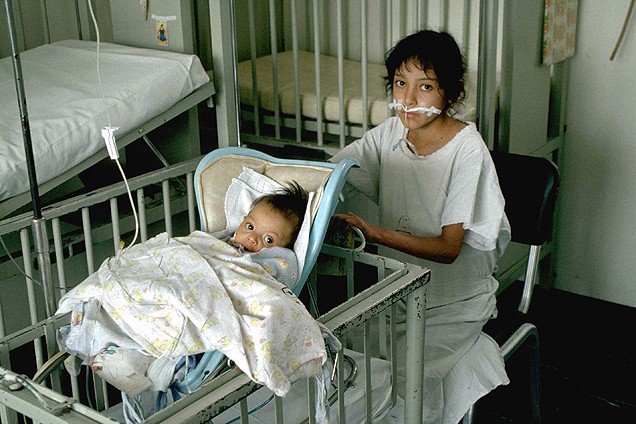Palliative care is a vital approach to healthcare that focuses on enhancing the quality of life for patients and their families facing challenges associated with life-limiting illnesses. It’s about addressing suffering in a comprehensive way, looking beyond just the physical symptoms. This involves a team-based method to provide support for patients and their caregivers, tackling practical needs and offering crucial bereavement counseling. Ultimately, palliative care aims to create a support system that empowers patients to live as actively and comfortably as possible until the end of life.
Defining Palliative Care: A Multidimensional Approach
Palliative care is more than just medical treatment; it’s a holistic approach that considers the person as a whole. It utilizes a team of professionals to support patients and their families. This multidisciplinary team typically includes doctors, nurses, social workers, and counselors, all working together to address a wide spectrum of needs. These needs extend beyond the physical and encompass emotional, social, and even spiritual well-being. By addressing these interconnected aspects, palliative care ensures a patient’s dignity and comfort are prioritized throughout their illness journey. Furthermore, palliative care extends its compassionate reach to caregivers, offering bereavement counseling to support them through loss and grief.
 Children receiving palliative care
Children receiving palliative care
Palliative Care as a Human Right
The importance of palliative care is underscored by its explicit recognition as a human right to health. This recognition emphasizes that palliative care is not a luxury but a fundamental component of healthcare that every individual should have access to. The delivery of palliative care should be person-centered, meaning it is tailored to the unique needs and preferences of each individual. Integrated health services are crucial in providing this type of care, ensuring seamless coordination and a patient-focused approach.
Conditions Requiring Palliative Care
Palliative care is not limited to one specific disease; it is relevant across a broad spectrum of illnesses. While many associate it primarily with cancer, the reality is that palliative care is essential for a wide range of chronic and life-threatening conditions. The majority of adults who require palliative care suffer from chronic diseases. Cardiovascular diseases represent a significant portion (38.5%), followed by cancer (34%), chronic respiratory diseases (10.3%), AIDS (5.7%), and diabetes (4.6%). Beyond these, numerous other conditions can necessitate palliative care, including kidney failure, chronic liver disease, multiple sclerosis, Parkinson’s disease, rheumatoid arthritis, neurological diseases, dementia, congenital anomalies, and drug-resistant tuberculosis. This highlights the widespread need for palliative care across diverse patient populations.
Symptom Management: Pain and Beyond
A core aspect of palliative care is the effective management of distressing symptoms. Pain and difficulty breathing are among the most prevalent and severe symptoms experienced by individuals needing palliative care. For instance, studies indicate that a significant percentage of patients with AIDS or cancer (80%), and those with cardiovascular disease or chronic obstructive pulmonary disease (67%) will endure moderate to severe pain towards the end of their lives. Opioids play a critical role in managing pain effectively and are considered essential medicines in palliative care.
Beyond pain relief, opioids can also provide relief from other distressing physical symptoms like breathlessness. Controlling these symptoms, especially at an early stage, is not only a matter of ethical medical practice but also a fundamental ethical duty. It is about alleviating unnecessary suffering and upholding a person’s dignity throughout their illness.
The Global Need for Palliative Care and Barriers to Access
Despite its recognized importance, access to palliative care remains insufficient worldwide. Estimates suggest that annually, 56.8 million people are in need of palliative care, with a disproportionate number residing in low- and middle-income countries. The disparity is even more pronounced for children, with 98% of children needing palliative care living in these resource-limited regions, and almost half of them in Africa.
Several significant barriers contribute to this unmet need for palliative care globally:
- Lack of Policy Integration: National health policies and systems frequently fail to incorporate palliative care as a standard component of healthcare services.
- Limited Training for Professionals: Healthcare professionals often receive inadequate or no training in palliative care principles and practices.
- Inadequate Opioid Access: Access to opioid pain relief, a cornerstone of palliative care, is often restricted, hindering the ability to manage pain effectively, and failing to meet international guidelines on essential medicines access.
A WHO survey conducted in 2019 revealed that while funding for palliative care was available in 68% of countries, only a meager 40% reported that services reached at least half of the patients in need. Data from the International Narcotics Control Board further illustrates the global inequity. In 2018, a staggering 79% of the world’s population, primarily those in low- and middle-income countries, consumed only 13% of the total morphine used for pain management globally. This stark disparity highlights the urgent need to improve access to essential pain relief medications in these regions.
Further obstacles hindering palliative care access include:
- Low Awareness: Lack of understanding among policymakers, healthcare providers, and the general public about What Palliative Care Is and the substantial benefits it offers to both patients and healthcare systems.
- Cultural and Social Factors: Cultural and social beliefs surrounding death and dying can sometimes create barriers to accepting palliative care.
- Misconceptions about Palliative Care: Common misconceptions, such as the belief that palliative care is solely for cancer patients or only relevant in the final weeks of life, limit its broader application.
- Fear of Opioid Misuse: Misguided concerns that improving access to opioid analgesia will inevitably lead to increased substance abuse create unnecessary restrictions on essential pain medications.
How Countries Can Improve Palliative Care
National health systems bear the responsibility for integrating palliative care seamlessly into the continuum of care for individuals facing chronic and life-threatening illnesses. This integration should link palliative care with prevention, early detection, and treatment programs, ensuring a holistic approach to patient well-being. At a minimum, this integration should encompass the following key components:
- Integrated Health System Policies: Implementing health system policies that formally integrate palliative care services into the structure and financial frameworks of national healthcare systems at all levels of care, from primary to specialized settings.
- Human Resource Development: Developing and expanding human resources through comprehensive training programs for existing healthcare professionals, embedding palliative care education into the core curricula of all new health professionals, and educating volunteers and the public to broaden the support network.
- Essential Medicines Policy: Establishing a robust medicines policy that guarantees the consistent availability of essential medicines for effective symptom management, with a particular emphasis on opioid analgesics for the relief of pain and respiratory distress.
Palliative care demonstrates the greatest effectiveness when introduced early in the course of an illness. Early integration not only significantly enhances the quality of life for patients but also demonstrably reduces unnecessary hospitalizations and the overall utilization of healthcare services.
Palliative care must be provided in alignment with the principles of universal health coverage. Equitable access is paramount, ensuring that all individuals, irrespective of their income, disease type, or age, have access to a nationally determined set of basic health services, including palliative care. Financial and social protection systems must recognize and uphold the human right to palliative care, particularly for vulnerable and marginalized population groups.
Nurses, as integral members of multidisciplinary teams, require specialized training in palliative care skills, particularly those working directly with patients facing serious illnesses.
While specialist palliative care is a crucial component of service delivery, a truly sustainable, high-quality, and accessible palliative care system necessitates integration at all levels. This includes primary healthcare, community-based care, and home-based care settings, alongside robust support for informal caregivers such as family members and community volunteers. Providing palliative care should be recognized as a fundamental ethical duty for all healthcare professionals.
WHO’s Role in Advancing Palliative Care
The World Health Organization (WHO) plays a leading role in promoting and supporting palliative care globally. Palliative care medicines, including essential pain relief medications, are included in both the WHO Essential Medicines List and the WHO Essential Medicines List for Children, underscoring their importance in global healthcare. Palliative care is recognized within key global mandates and strategies related to universal health coverage, noncommunicable diseases, and people-centered integrated health services. The WHO also provides evidence-based guidance, such as the “WHO Guidelines for the pharmacological and radiotherapeutic management of cancer pain in adults and adolescents,” released in 2019.
In 2014, a landmark global resolution, World Health Assembly resolution WHA67.19, specifically called upon the WHO and its Member States to prioritize improving access to palliative care as a core component of health systems. The resolution emphasized integration within primary healthcare and community/home-based care models. The WHO’s ongoing efforts to strengthen palliative care are focused on several key areas:
- Integration into Global Plans: Integrating palliative care into all relevant global disease control and health system plans and frameworks.
- Service Development Assessment: Assessing the current state of palliative care service development worldwide to identify gaps and needs.
- Guideline and Tool Development: Developing evidence-based guidelines and practical tools for integrated palliative care across various disease groups and levels of care, while also addressing ethical considerations related to comprehensive palliative care provision.
- Improving Medicine Access: Supporting Member States in enhancing access to essential palliative care medicines through improved national regulations and streamlined delivery systems.
- Focus on HIV: Providing a special focus on palliative care for individuals living with HIV, including the development of specific guidelines tailored to their needs.
- Children’s Palliative Care: Promoting increased access to palliative care for children, in close collaboration with UNICEF.
- Global Monitoring and Evaluation: Monitoring global palliative care access and rigorously evaluating progress made in palliative care programs to ensure accountability and effectiveness.
- Indicator Development: Developing specific indicators to effectively evaluate the quality and impact of palliative care services.
- Resource Mobilization: Encouraging the allocation of adequate resources for palliative care programs and research, particularly in resource-limited countries where the need is greatest.
- Evidence-Based Models: Building a robust evidence base for palliative care models that are proven to be effective in low- and middle-income settings, ensuring culturally appropriate and sustainable solutions.
References:
(1) Assessing national capacity for the prevention and control of noncommunicable diseases: report of the 2019 global survey. Geneva: World Health Organization; 2020. Licence: CC BY-NC-SA 3.0 IGO.
(2) The Report of the International Narcotics Control Board for 2019 (E/INCB/2019/1) https://www.incb.org/documents/Narcotic-Drugs/Technical-Publications/2019/Narcotic_Drugs_Technical_Publication_2019_web.pdf
(3) WHO Guidelines for the pharmacological and radiotherapeutic management of cancer pain in adults and adolescents. https://www.who.int/publications/i/item/who-guidelines-for-the-pharmacological-and-radiotherapeutic-management-of-cancer-pain-in-adults-and-adolescents
